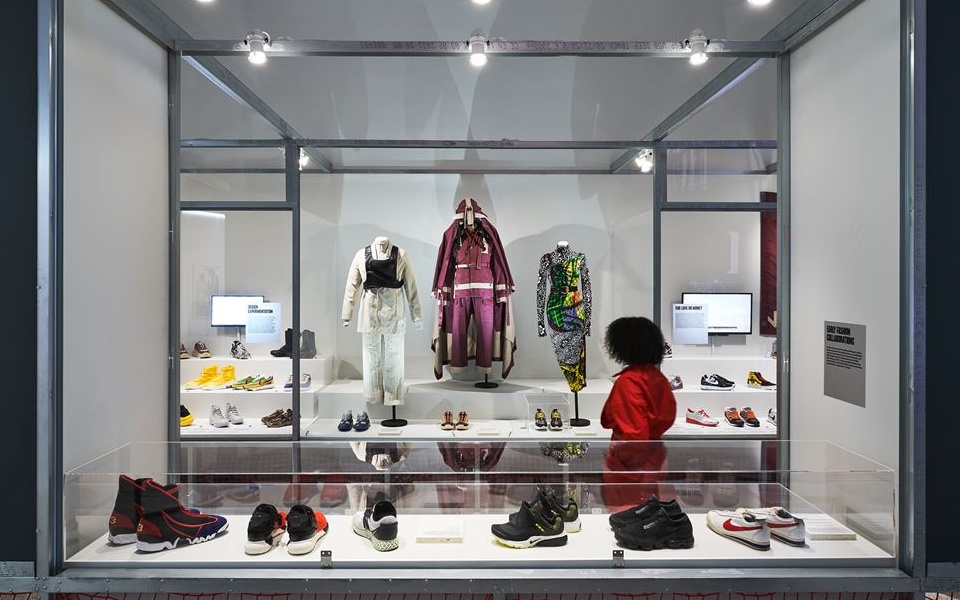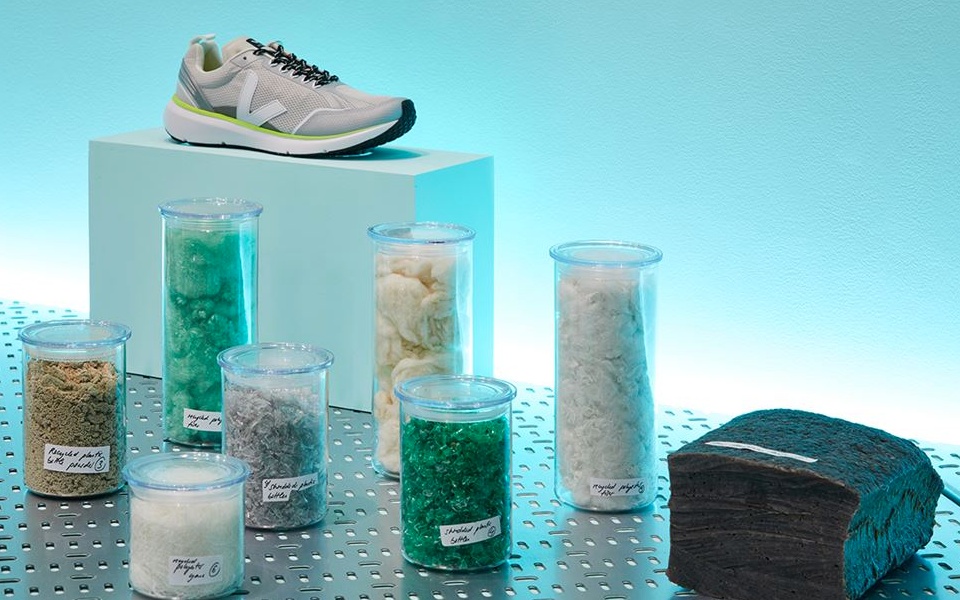Sneakers Unboxed: Studio to Street at the Design Museum

I don’t usually give much thought to my footwear when visiting an exhibition. But before setting off to the Design Museum this week I spent a couple of minutes mulling over the dozens of pairs of trainers I’ve accumulated over the years.
I glossed over the three pairs of Nike Internationalist – mustard, burgundy and teal, all looking pretty scrappy after almost a decade – briefly considered the custom Nike Air Force 1/1s in cyan and magenta with “DIN” and “NEEN” sewn into the back, before settling on the Adidas Continental x TFL collaboration, a range in which each shoe uses the colourways from a different London Underground line (I have them in grey with the blue and turquoise trim from the Victoria and Waterloo lines; black with brown and red trim representing the Central and Bakerloo lines; and cream with yellow and burgundy from the Circle and Metropolitan lines, of which I wore the latter).
This is more detail than I have ever gone into about my footwear, but I want to explain that I am at least partially qualified to review the Design Museum’s new Sneakers Unboxed: Studio to Street exhibition. Still, after wandering through its galleries it soon became clear that I am but a journeyman in this world, barely scraping the surface of this vast behemoth of an industry, which is worth an estimated $100bn a year, with resale alone worth $6bn. The UK is the world’s third biggest consumer of trainers (five per cent), after the US (29 per cent) and China (18 per cent).

But the corporate forces behind the industry belie the grassroots creativity that drives it. Unlike most fashion, which trickles down from a handful of designers to be iterated upon by retail chains, sneaker fashion has been powered by the style of inner city, predominantly black youths, from basketball obsessed kids in 1980s New York projects to the UK grime scene in the early 2000s. There were kids in London wearing Jamaican dancehall inspired shirts and dress trousers with Nike Air Jordans long before Justin Bieber sported sneakers and a suit on the red carpet.
The Design Museum tells the stories of these subcultures in its trademark vibrant, arresting style. There are video interviews with Grime artists, street photography of skater-kids and photo-journals of Chuck Taylor-wearing Mexican youths.
And, of course, there are sneakers. So many sneakers. There are Shaquille O’Neal’s absurdly large size 22 Reebok Shaq Attaqs, which look like oversized film props, the sneaker equivalent of the giant plastic ice cream cones you see outside cafes in seaside towns. There are the only-slightly-smaller Nike Kobe 10 Elite ‘Opening Night’ flyknit basketball boots worn by Kobe Bryant shortly before his last appearance as a professional basketball player.
There’s a huge emphasis on the groups and individuals taking the products of multinational companies and making them their own, from blokes on the streets of London espousing the virtues of good shoe care, to a lad in Leeds who set up a business repainting old sneaks, to a Japanese designer taking trainer materials and putting them into the silhouette of loafers and brogues (the results of which repulse me on a level so primal I struggle to fully explain it).

There’s a section on the science behind sneakers, touching upon the links between heavy industry and fashion design (early trainers being made by Dunlop and Goodyear using byproducts of tyre manufacturing; Nike working with Korean carmaker Daewoo to produce its “Foamposite” synthetic trainer material), and how the famous “waffle” sole was so-called because it was made when a curious designer poured rubber into his wife’s waffle-maker, right up to the physics responsible for the latest knitted running shoes and the energy-returning soles that have enabled athletes to break new records.
There’s a nod to the widely-reported, dodgy practices of the big shoemakers and the environmentally unsound mass production of billions of synthetic shoes that will probably outlive our species, but for the most part this is a celebration of the vibrancy of the industry, a feel-good exhibition that’s a great way to restart your cultural calendar and perhaps inspire you to do a spot of shopping once you’ve finished.
